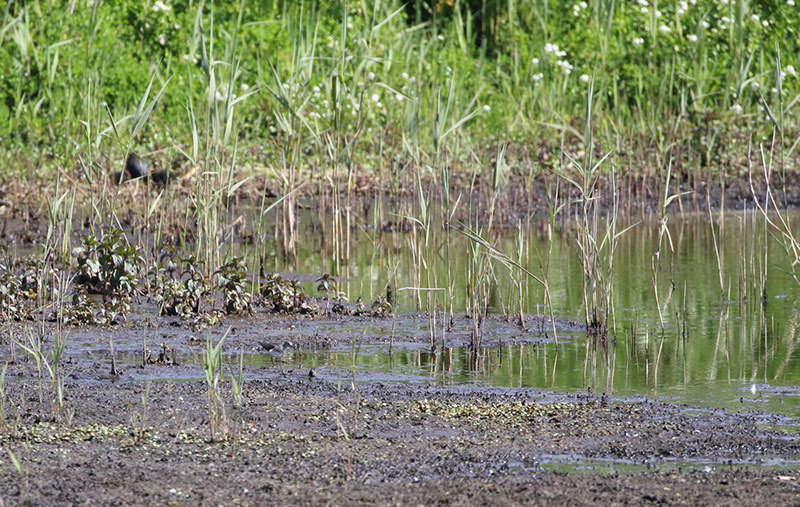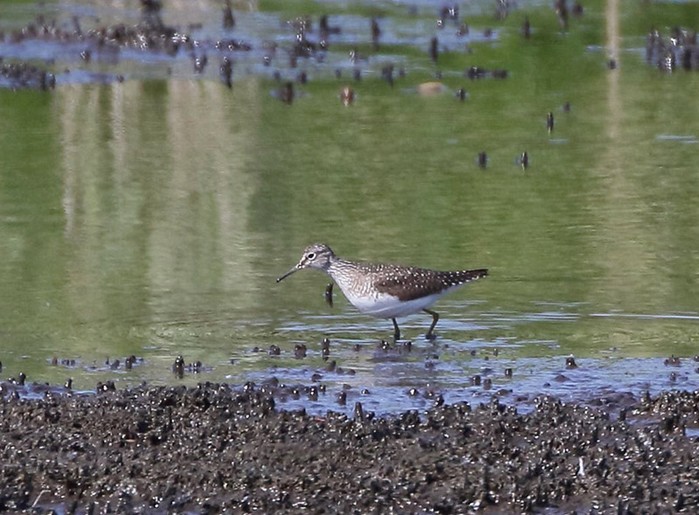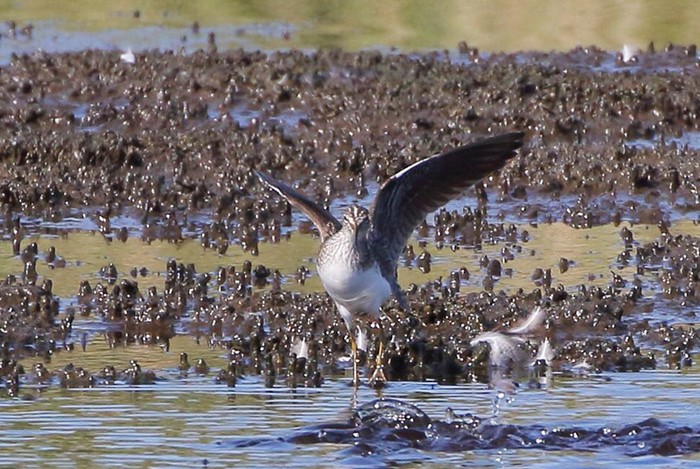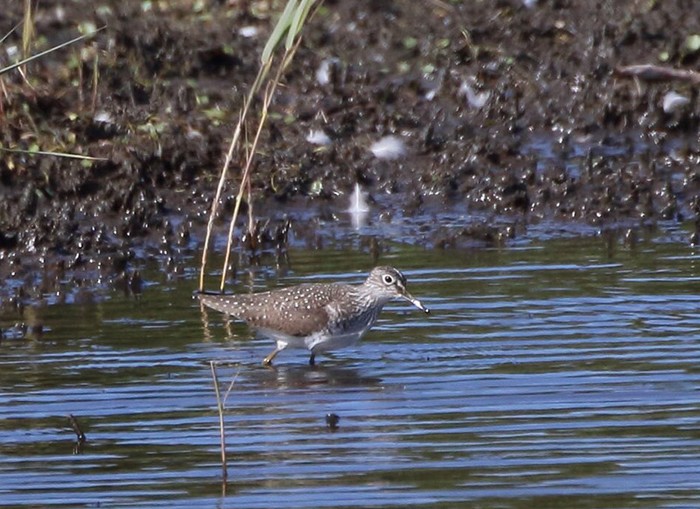Finders-in-the-Field: Solitary Sandpiper, St Mary’s, Isles of Scilly, May 2020
By Bob Flood
The year-planner for 2020 was packed full of fantastic ocean adventures and tubenose research programmes that I was so much looking forward to. Then came COVID-19 and since February what I call my ‘extended shore leave’. So, here I am, stuck in the Isles of Scilly, my home and my other great birding love in life. Work aside, I have enjoyed getting into the field and quality Scilly spring birding. Apart from the rare and scarce birds, it has been a treat to catch-up with a good showing of species not commonly seen in Scilly, such as Lesser Whitethroat, Garden and Wood Warblers, male Redstart and male Whinchat.
On 18th May, at about 10.15 am, I was completing my morning walk, returning to my car via Porthellick Pool. I had already checked the pool carefully early in the morning and saw nothing of note. In need of a mid-morning cup of tea accompanied by digestive biscuits I skipped all of my regular pool check points, except the last one with a view over the north end of the pool. Porthellick hides are locked in line with COVID-19 Government guidelines. Viewing involved peering over screens, shrubs and reeds.
In the farthest northeast corner of the pool and partly obscured by reeds was a smallish sandpiper. I had only binoculars with me and struggled to see its features. I felt quite irritated as I really wanted that cup of tea, but since it’s Scilly I daren’t go home without confirming the sandpiper’s identity.

The sandpiper continued to feed partly obscured and I continued to look for key features. There was something about it that didn’t add up to the expected springtime Common, Green or Wood Sandpiper. If it was a Common, then why wasn’t it bobbing most of the time? If it was a Green, then why was it brown toned? If it was a Wood, then why didn’t it show a prominent white supercilium?
While the views were distant, I was using my trusted 12x Canon image-stabilised binoculars. With this aid, I grew the impression of bold spectacles and a rather attenuated rear-end, and the plumage was greyish-brown. A strong sense of déjà vu came over me. On 23rd July 2003, I found a strikingly-alike wader in exactly the same spot and it was a Solitary Sandpiper.
Despite today’s evidence pointing to Solitary, a voice of dissent in my mind said, ‘don’t be stupid Bob, it’s mid-May, it’s the wrong time of year’. But the more I studied the sandpiper the more I disagreed with the voice of dissent. The month of May or not, this sandpiper looked like a Solitary. The sandpiper then flew directly toward me with fairly strong wingbeats, didn’t call, and didn’t reveal any additional structural or plumage features. However, the remote possibility of a Common – which has weak-looking quivering-winged flight – was now completely eliminated.

The sandpiper landed in front of the nearby Sussex hide and was hidden from view. I snook-up to the hide, peered through the slithers of viewing, and saw no more than a flash of a sandpiper as it shot off toward the south end of the pool. The experience was now becoming rather trying. Nevertheless, I scooted to the south end and crept along a track that I’ve created to the poolside and peeked around the corner to get my first unobscured view, albeit with the naked eye, and for just a split second before the sandpiper walked out of sight. It sported thick-white John Lennon spectacle frames and a truly attenuated and pointy rear-end.

I muttered to myself, ‘If this isn’t a Solitary Sandpiper then I’ll give up land birding as a bad job’. I rang best buddy Ashley Fisher with the news that I reckoned I had a Solitary Sandpiper. Rather conveniently Ash was on the other side of the pool and was with me in a few minutes, in time to see the Solitary take to the wing and fly around for perhaps 30 seconds. We saw the dark rump, dark central tail feathers, and multiple bars across the white tail sides. No need to hang up my bins after all!

With Scilly in lockdown, the following ‘twitch’ involved only local birders. Maybe eight of us observed the Solitary on and off over the rest of the day, with four the maximum at any one time. Social distancing wasn’t a problem. ‘Scope views were very nice indeed. Next day the Solitary had departed, having made just a short stop-over, like a typical spring migrant rather than a fresh-in transatlantic vagrant. Perhaps the Solitary had crossed the Atlantic from North America in a previous year?
My boy ticking solitary sand yesterday. He really enjoyed watching it, thought it was really cool, was surprised by how small it was... Then his last words on it as he handed me my bins back were “Yeah it looks just like a song thrush”! ?? #nailedit pic.twitter.com/pYlqtQRppH
— Scott Reid (@stmarys_patch) May 19, 2020
Finding a Solitary Sandpiper ultimately was a good experience. While recounting the story, though, I am mindful that the event happened in the midst of the COVID-19 crisis and all that comes with it, in particular the tragedies and the braveries of people, and am grateful to the many people who are looking after our well-being and future.
Bob Flood
22 May 2020
Share this story




